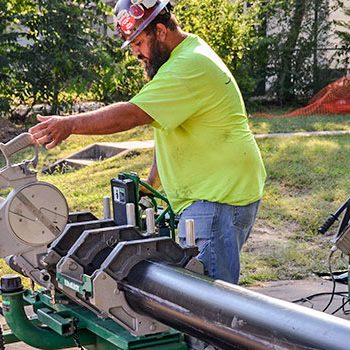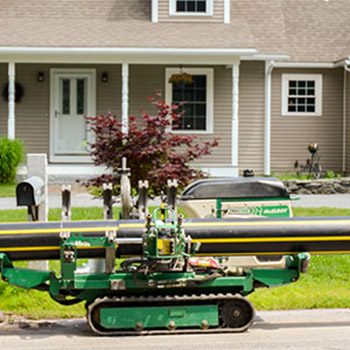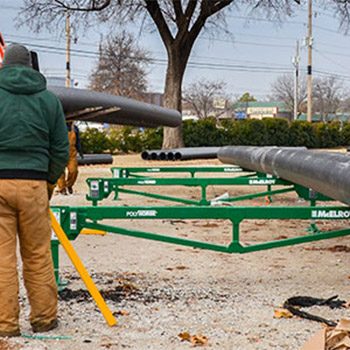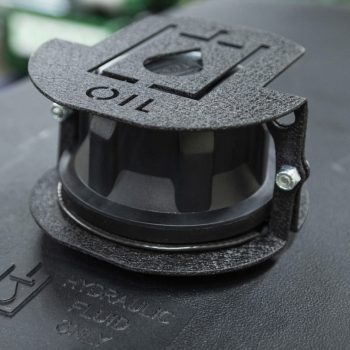The fusing of thermoplastic pipe results in a leak-free and corrosive-resistant system that is becoming the preferred choice for replacing conventional piping systems that are failing across the country.
McElroy is the worldwide leader in the science of joining thermoplastic pipe in a growing number of infrastructures. A crucial part of any new installation is the selection of a fusion machine that will cater to your jobsite’s specific needs.
Here’s a few tips on McElroy machine selection:
Pipe Size
What size range of pipe and wall thickness will you be working with? This determines which size carriage and or combination of carriages you may need. McElroy fusion machines are available for pipe as small as 16mm and as large as 2m (½” CTS to 78″ OD).
The pipe size range, dimensional ratio (DR) and the particular fusion standard being followed will dictate whether a low-, medium- or high-force fusion machine should be used on your job. Typically, when fusing pipe with high interfacial pressures, a medium- or high-force cylinder is required.
Magnitude of the Job
How much fusing will you be doing and where will you be doing it? If you are fusing smaller diameter pipe in the confines of a ditch, a manual Pit Bull® butt fusion machine may be all you need. These compact machines will fit in tight work spaces more easily. They are lightweight and can be physically carried from joint to joint yet they are rugged enough to perform fusions all day long.
But if you are fusing a very long pipeline with medium- and large-diameter pipe, you will want to consider the portability of the machine and how much accompanying equipment — such as generators and hydraulic power units (HPUs) — you are willing to haul around.
McElroy’s Rolling fusion machines and the flagship TracStar® machine line are good options because they allow for greater mobility whether on wheels or a track system.
The Rolling machines are towed with another piece of equipment to the fusion area and remain stationary as sticks of pipe are fused and pulled through. Many are self-contained as well, generating their own electricity and hydraulic power, so you don’t have to transport those items separately.
The TracStars are not only self-contained, but they are self-propelled which offers greater freedom of movement even across rugged terrain. They can remain stationary at your fusion site or easily move between fusion locations.
Whether a Rolling machine or a TracStar, the fusion unit can be easily removed for in-ditch fusion. In tight installations, the outer fixed jaw and skid can be removed for an even more compact fusion unit.
If there are many fusions on schedule for the day, opting for the hydraulic clamping feature should be strongly considered. Operators using manual fusion machines rely on their own strength to apply fusion pressure and can become fatigued. A lot of time and effort can be saved when the necessary muscle is hydraulically-powered. On the other hand, the most powerful machine may not make sense if only a few fusions are being done. A more lightweight and economical machine in the line of fusion products may be a better option.
Deadlines
What is your deadline? Time is of the essence on most jobsites. Taking advantage of productivity tools to expedite your fusion process can help you turn out long runs of fused pipe each day saving time and money.
McElroy’s PolyHorse® and MegaMc® PolyHorse®, powered pipe-handling systems, can hold a day’s worth of pipe at the jobsite. They feature a series of adjustable racks that lift and feed pipe into the fusion machine which increases productivity by 150 percent and eliminates costs for the extra manpower and heavy machinery that would be needed otherwise.
The MegaMc Pipe Stands hold the fused pipe lengths level with the machine which helps maintain the alignment for ongoing fusion processes. Low Profile Rollers pull long lengths of fused pipe long distances and minimize pipe drag. These kinds of productivity tools allow the fusion to be staged in one area.
Installing coiled pipe is also performed more quickly with the LineTamer® which was designed to straighten and re-round an entire coil of pipe with a minimum of two fusion joints.
Data Collection Requirements
The advantage of choosing machines with hydraulic power, even for pipe as small as 2″, is the built-in data logging capability which keeps a record of each fusion joint.
The McElroy DataLogger® is used to record and document the key parameters of the fusion process with easy-to interpret graphics of the heat and cool times and fusion pressures. A consistent routine of data collection can provide assurance that fusion joints are safe and sound before they go in the ground, potentially avoiding costly expenses to extricate and repair questionable joints.
This is especially important to contractors, pipeline owners and engineers as new regulations continue to emerge that require better record keeping and increased accountability for those creating and managing pipeline infrastructures.
Data logging tools are becoming more and more advanced in an effort to capture information in a variety of ways. Key features of the latest model DataLogger 5 include GPS tagging targeting fusion locations, built-in 5MP cameras to capture fusion alignment, and barcode scanning to input data from pipe and fittings.
The DataLogger 3, 4 and 5 generate joint reports for in-field review or transfer to the DataLogger Vault™, a free online application that provides secure storage and analysis in the cloud that can be accessed from multiple locations with an internet connection.
Maintenance and Operator Training
In addition to machine selection, two other factors must be strongly considered for a successful fusion operation: maintenance of fusion equipment and well-trained operators. Both are achieved by taking advantage of on-the-job, hands-on and classroom training that is available through McElroy University which helps promote efficiency, productivity and safety.




